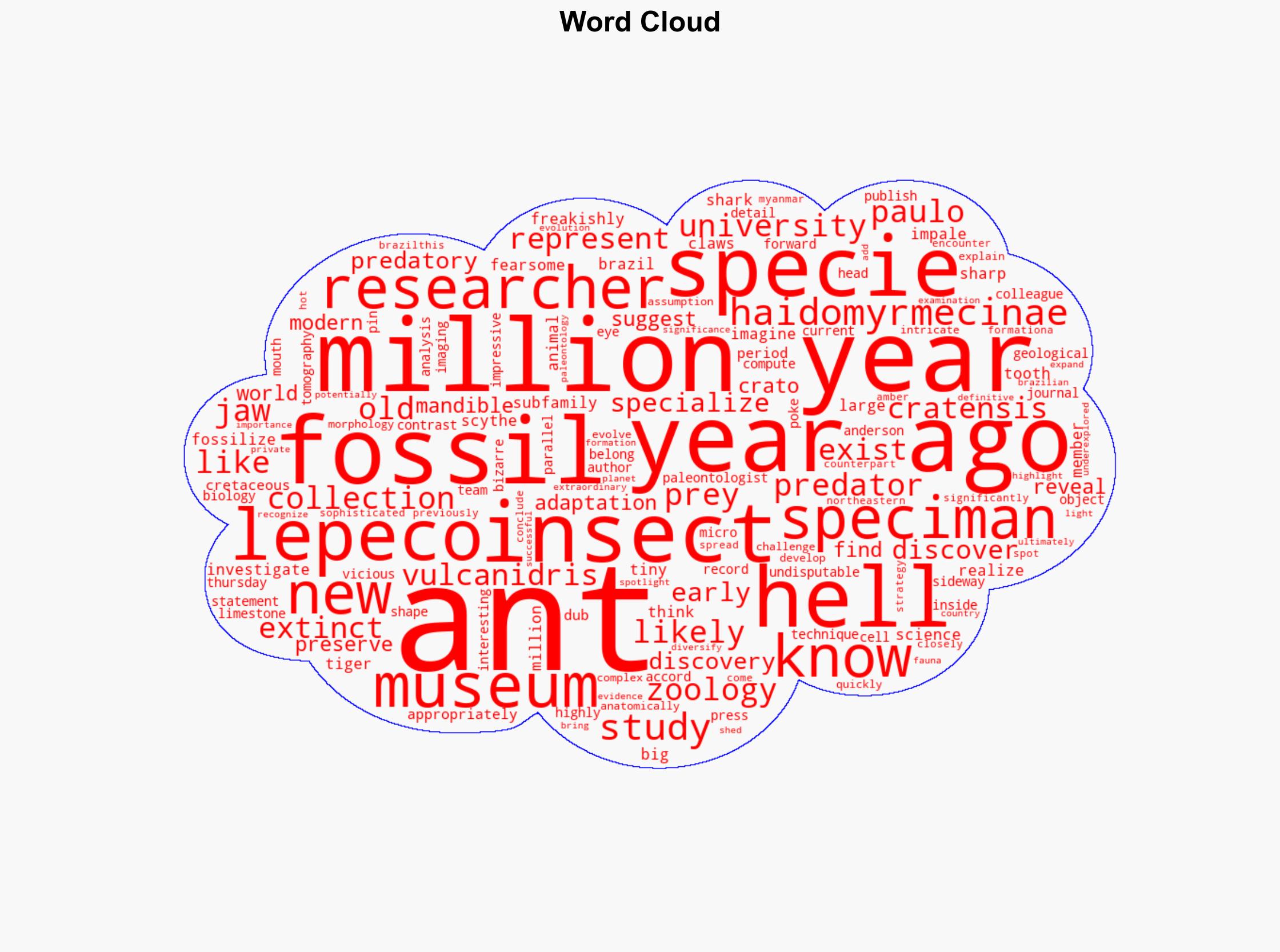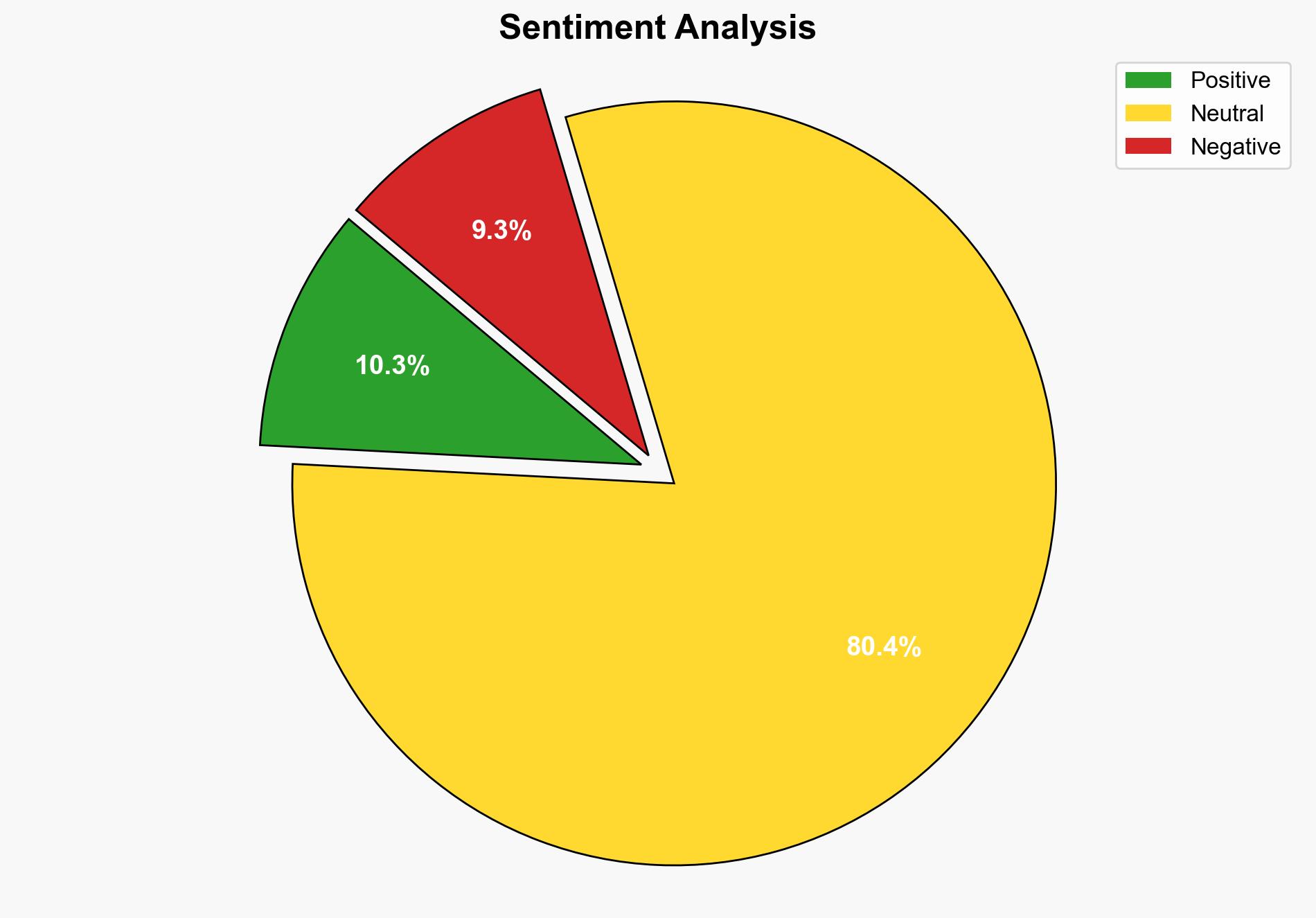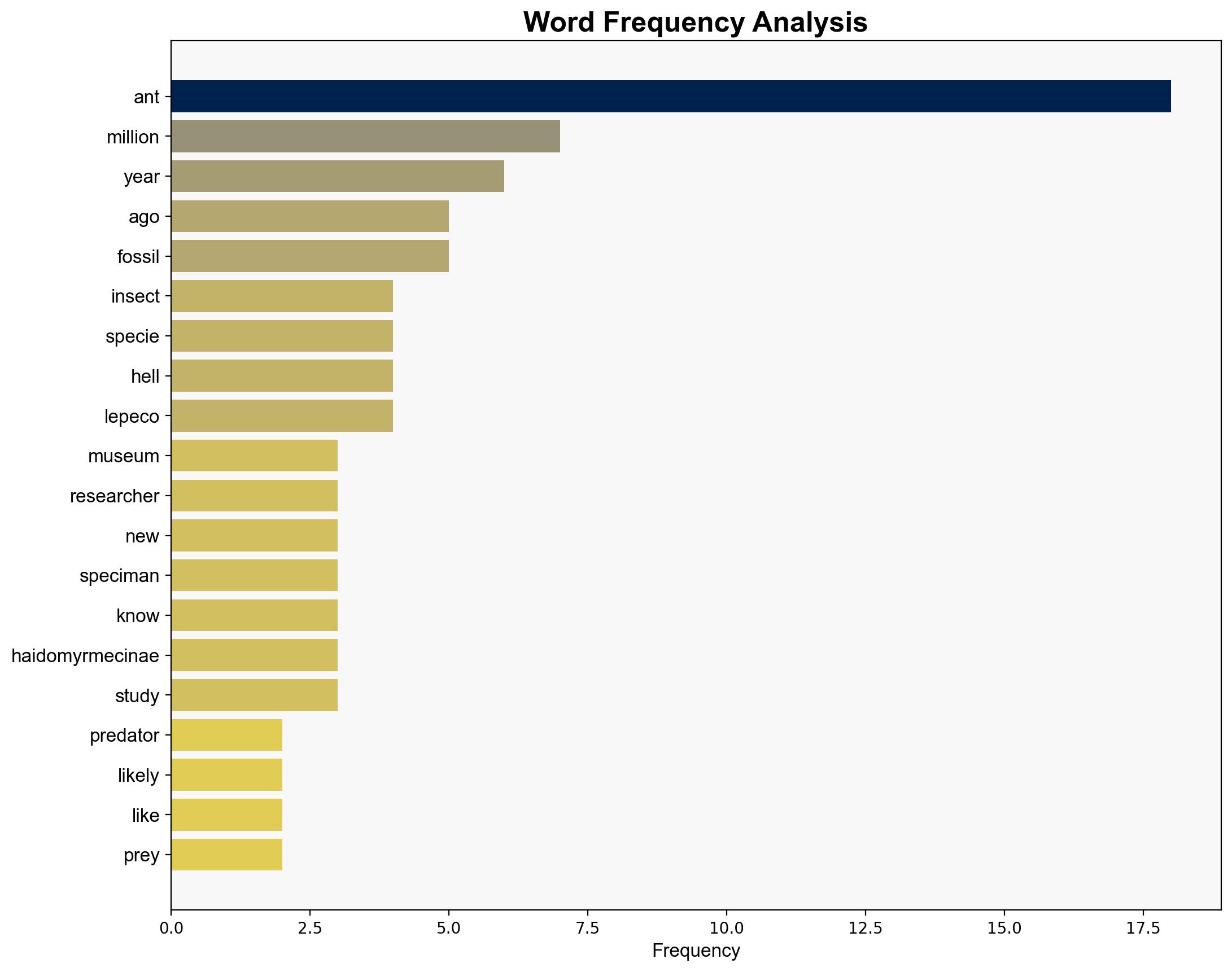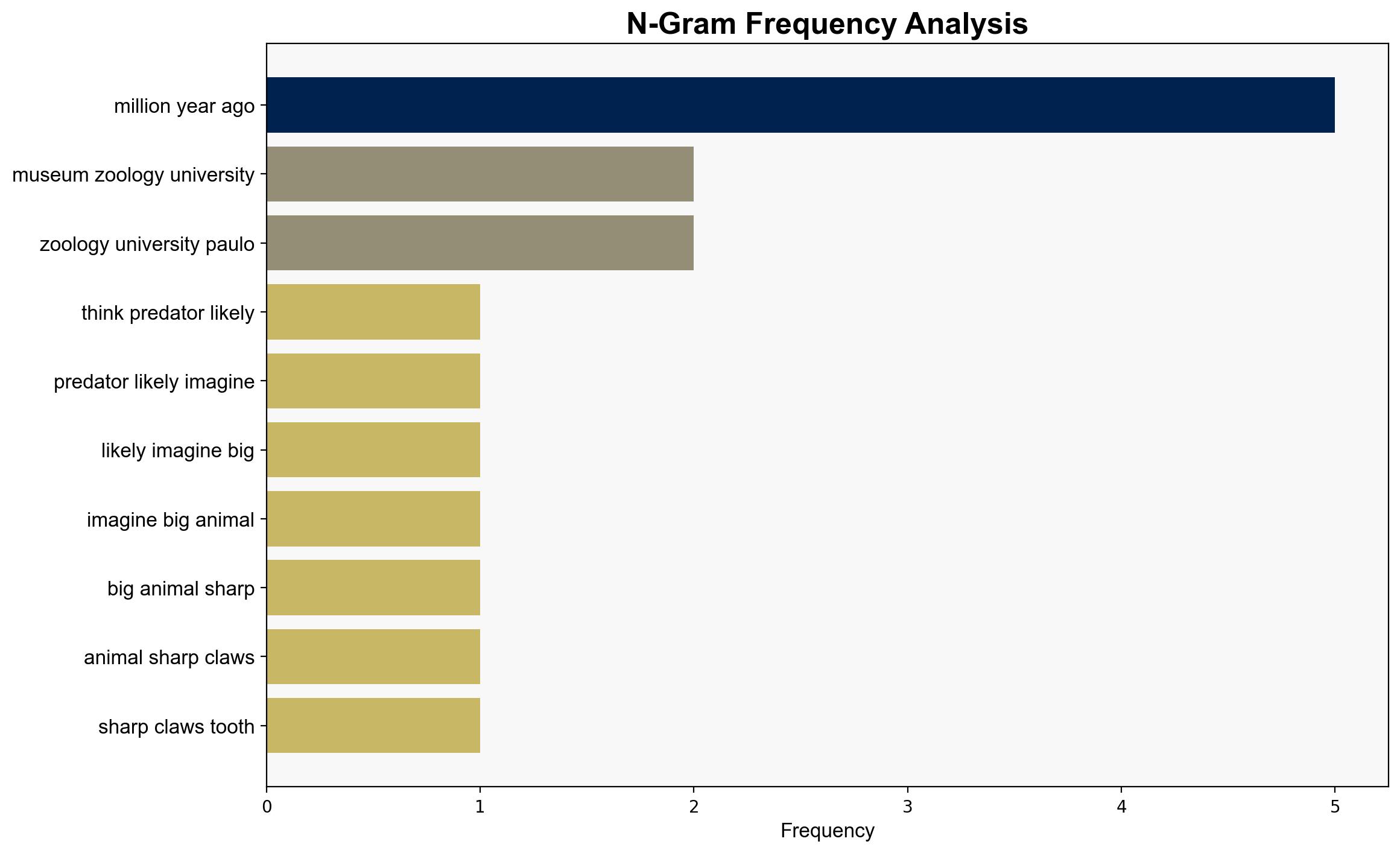The Oldest Known Ant Specimen Held Its Prey With Weird Mandibles Researchers Claim – Gizmodo.com
Published on: 2025-04-26
Intelligence Report: The Oldest Known Ant Specimen Held Its Prey With Weird Mandibles Researchers Claim – Gizmodo.com
1. BLUF (Bottom Line Up Front)
Researchers have discovered a 99-million-year-old ant fossil, Vulcanidris cratensis, in Brazil, revealing sophisticated predatory adaptations. This finding challenges assumptions about the rapid evolution of complex insect behaviors and highlights the global distribution of ancient ant species. The study underscores the importance of examining existing fossil collections to enhance understanding of insect evolution.
2. Detailed Analysis
The following structured analytic techniques have been applied to ensure methodological consistency:
SWOT Analysis
Strengths: The discovery provides new insights into the evolutionary history of ants, showcasing their early adaptation and diversification.
Weaknesses: Limited access to fossil sites and collections may hinder further discoveries.
Opportunities: Enhancing collaboration among paleontologists globally could lead to more significant findings.
Threats: Potential loss of fossil sites due to environmental changes or human activity.
Cross-Impact Matrix
The discovery could influence future paleontological research directions, potentially affecting funding and resource allocation. It may also impact educational content related to evolutionary biology.
Scenario Generation
Best Case: Increased funding and international collaboration lead to further groundbreaking discoveries in paleontology.
Worst Case: Environmental degradation limits access to fossil sites, stalling further research.
Most Likely: Continued interest in paleontology drives moderate growth in research and discovery.
3. Implications and Strategic Risks
The discovery highlights the potential for significant paleontological findings in underexplored regions, suggesting a need for strategic preservation of fossil sites. It also emphasizes the importance of interdisciplinary research in understanding evolutionary processes.
4. Recommendations and Outlook
- Encourage international collaboration to enhance fossil research and preservation efforts.
- Promote educational initiatives to raise awareness of the importance of paleontological research.
- Develop scenario-based strategies to mitigate risks associated with environmental changes affecting fossil sites.
5. Key Individuals and Entities
Anderson Lepeco
6. Thematic Tags
(‘paleontology, evolutionary biology, fossil research, global collaboration’)





